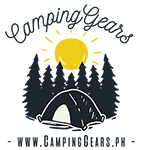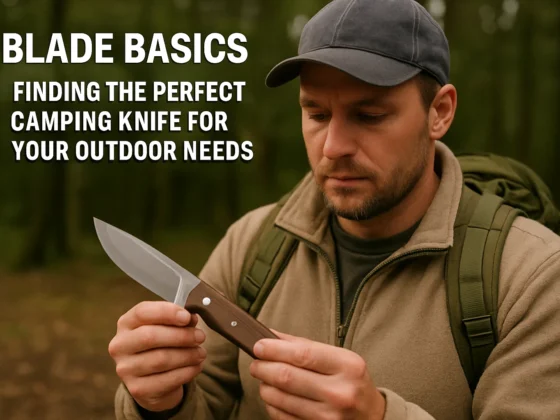Introduction: Water Is Non-Negotiable
While hiking boots, backpacks, and trekking poles often steal the spotlight, it’s water that truly keeps every camper moving forward. In the humid, often unpredictable terrain of the Philippines, staying hydrated isn’t just important—it’s essential.
For those exploring local forests, mountains, or camp sites near Manila, the right water-carrying solution is just as crucial as any survival kit. But hydration isn’t a one-size-fits-all situation. The way you store, carry, and drink water can impact your energy levels, pace, and overall comfort throughout the trail.
This guide breaks down the best water carriers for hiking in the Philippines—what to look for, what to avoid, and how to tailor your gear to your adventure.
Why Traditional Water Bottles Aren’t Always Enough
Standard water bottles work well for casual strolls or short hikes, but they often fall short on more demanding trails. Carrying a bulky bottle by hand can throw off your balance, and frequent stops to unscrew the lid interrupt your rhythm.
More importantly, they lack versatility. Multi-day hikes, steep climbs, or intense summer heat all demand hydration systems that are lightweight, accessible, and easy to refill. That’s where specialized water carriers come in.
Key Considerations When Choosing a Water Carrier
Before diving into your options, it helps to understand what separates an average container from a trail-ready companion.
1. Capacity
The most common sizes range from 1 liter to 3 liters. Day hikers might get by with 1–2 liters, while overnight campers or those hiking under the sun should plan for at least 3 liters.
2. Weight and Portability
Look for lightweight materials like BPA-free plastic or soft-sided pouches. Rigid bottles can take up more space and are harder to pack, especially in a full backpack.
3. Ease of Access
On-the-go access is critical. Flip-top spouts, bite valves, or hose systems make it easier to sip without breaking stride.
4. Refillability
Can you easily fill the container at a stream or faucet? Wide mouths and compatibility with water filters can be a major advantage for longer treks.
5. Durability
Your water carrier should be able to take a hit—whether from rocky terrain or a sudden fall. Look for puncture-resistant materials and leakproof seals.
Top Water Carrier Types for Hikers and Campers
Here’s a closer look at the different hydration systems hikers commonly use on the trail, and how they fit into Philippine terrain and weather conditions.
1. Hydration Bladders
These flexible reservoirs fit into a special sleeve inside a backpack and come with a drinking tube that snakes over your shoulder.
Pros:
-
Hands-free access via bite valve
-
Lightweight and space-saving
-
Ideal for long-distance hiking
Cons:
-
Harder to clean
-
Can be punctured if not stored properly
Great for: Long hikes across the Sierra Madre, or weekend treks through humid jungle trails.
2. Collapsible Water Bottles
These soft-sided bottles shrink as you drink, saving space and weight.
Pros:
-
Ultra-lightweight
-
Packs down easily
-
Often cheaper than rigid bottles
Cons:
-
Not as durable
-
Can be awkward to drink from when full
Great for: Short overnight trips or those wanting a compact backup water source.
3. Hard-Shell Bottles
Usually made from BPA-free plastic or stainless steel, these offer a familiar bottle shape and robust construction.
Pros:
-
Extremely durable
-
Easy to clean
-
Some models keep liquids cold
Cons:
-
Bulky
-
Heavier than soft containers
Great for: Casual campers at drive-in sites or basecamps with shorter hikes.
4. Water Filter Bottles
These come with built-in filtration systems, allowing hikers to collect water from streams, lakes, or rain sources.
Pros:
-
Safe hydration from natural sources
-
Reduces need to carry extra liters
-
Saves space on long hikes
Cons:
-
Slower flow rate
-
Filter maintenance required
Great for: Adventurers exploring remote camp sites near Manila where fresh water access is uncertain.
How Much Water Should You Carry?
A good rule of thumb is half a liter of water per hour of hiking in moderate temperatures. However, this can vary depending on:
-
Temperature: Hot, humid days call for more
-
Elevation gain: Uphill climbs increase dehydration
-
Duration: Multi-day trips require planned refills or filtration
-
Your physical condition: If you’re newer to hiking or sweat heavily, carry extra
Pro tip: Don’t wait until you’re thirsty. Drink small amounts regularly to stay ahead of dehydration.
Water Tips for Hiking in the Philippines
-
Start hydrated. Drink water before hitting the trail.
-
Plan refill points if available, such as rivers or campgrounds.
-
Use electrolyte tablets or drink mixes to replace lost salts.
-
Protect your water from heat. Use insulated sleeves or store it deep in your pack.
-
Practice Leave No Trace. Don’t contaminate natural sources when filling bottles or cleaning bladders.
Recommended Campsites Near Manila with Water Access
If you’re planning your first overnight hike and want to test your new gear, check out scenic camp sites near Manila that are accessible, beginner-friendly, and rich in natural water sources:
-
Mt. Balagbag (Rizal): Offers scenic views and streams along the trail
-
Bangkong Kahoy Valley (Quezon): Cooler climate and fresh mountain springs
-
Tarak Ridge (Bataan): Known for challenging terrain and natural streams
-
Buhawi Camp (Tanay): Quiet riverside setting with forested trails
-
Mt. Daraitan (Tanay): Crosses the Tinipak River—perfect for filtering fresh water
Each of these locations provides varying levels of access to clean water, so your choice of hydration gear will make a noticeable difference in comfort and preparedness.
Caring for Your Water Gear
Your hydration system should be cleaned after every trip to prevent bacterial growth or mold. Here’s how:
-
Hydration bladders: Use cleaning tablets or mild soap with warm water. Dry completely before storing.
-
Hard-shell bottles: Wash with soap and water. Scrub lids and straws.
-
Collapsible bottles: Rinse and air dry fully. Store uncapped to prevent odor build-up.
-
Filter bottles: Backflush filters and follow the brand’s cleaning instructions.
Store gear in a dry, cool place between trips, and check for any damage before reusing.
Final Thoughts: Hydration Is Gear
Hydration is not just a side concern when camping or hiking—it’s a part of your gear strategy. Choosing the right water carrier can mean the difference between a comfortable hike and one cut short by dizziness or fatigue. When exploring the vast landscapes, being properly equipped helps you move further, feel better, and stay safer.
Whether you prefer bladders, bottles, filters, or a combination of all three, what matters most is that your hydration setup suits your pace, destination, and body.



